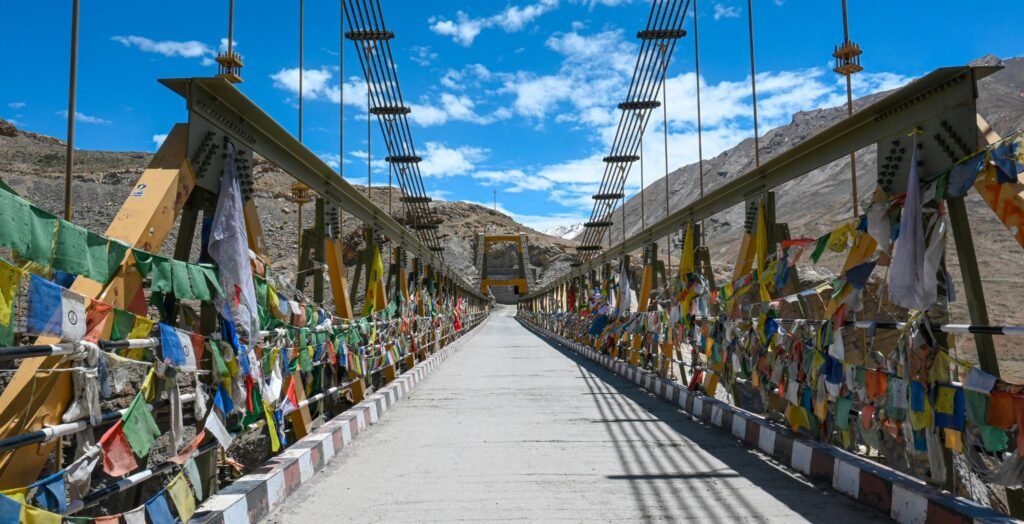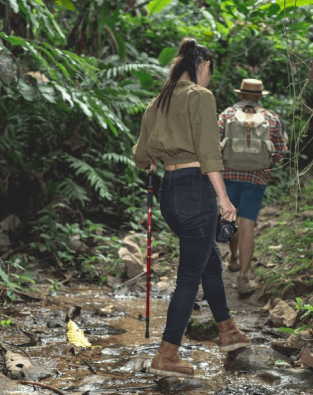Nestled high in the Himalayas, Spiti Valley is one of India’s most stunningly isolated regions, offering a surreal experience for those willing to venture into its rugged, off-the-beaten-path terrain.
A cold desert surrounded by snow-capped peaks, ancient monasteries, and crystal-clear lakes, Spiti is a place where nature’s raw beauty comes to life.
If you’re a lover of adventure, pristine landscapes, and cultural exploration, Spiti Valley is calling your name.
Whether you’re trekking through its barren, wind-swept plains, exploring centuries-old Buddhist monasteries, or simply soaking in the views from one of its hidden villages, Spiti promises an unforgettable journey.
It’s a destination that appeals to offbeat travellers, wanderers, and anyone looking for a pure, untouched slice of India that feels worlds away from the hustle and bustle of everyday life.
How to Reach Spiti Valley: Your Routes of Travel
The journey to Spiti Valley is not the simplest, but the adventure starts as soon as you arrive in this isolated region of Himachal Pradesh.
Manali and Shimla are the two primary routes to Spiti. Though each road offers a unique experience, they both lead to Kaza, Spiti’s main town.
The Manali Road
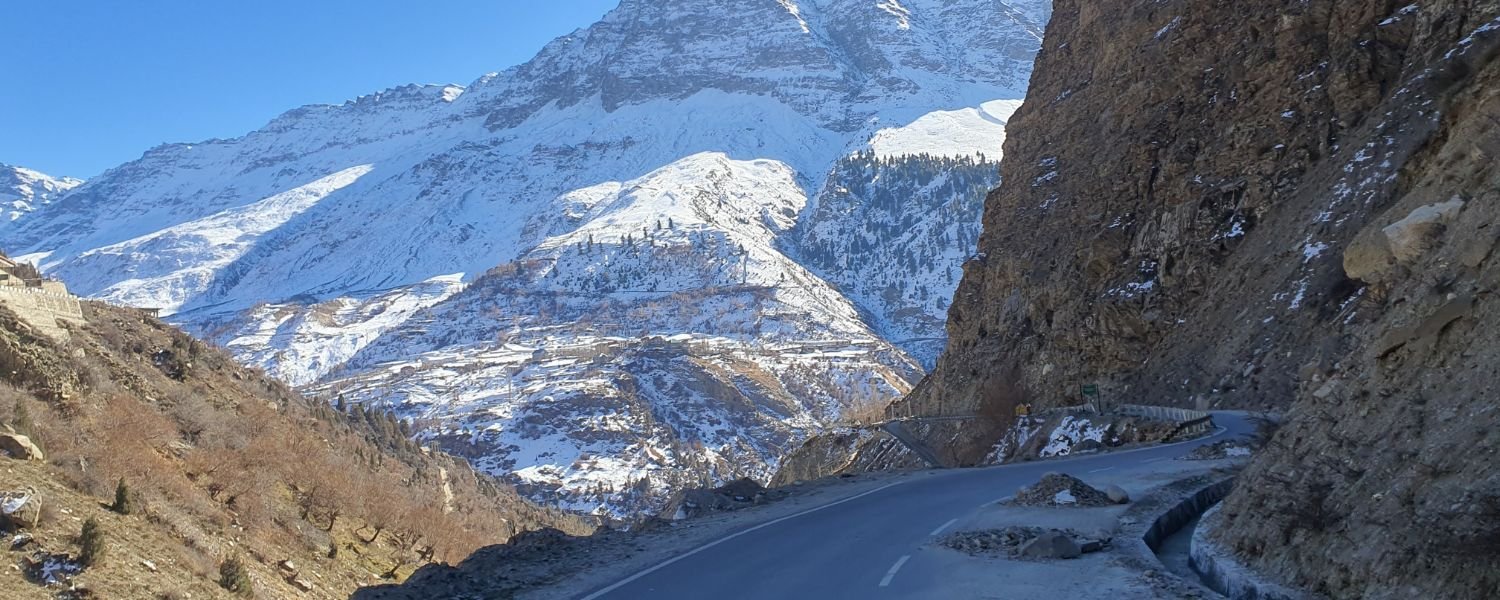
Although it is shorter, the Manali to Spiti route is more difficult. Because the roads are closed by heavy snowfall in the winter, it is only open for a few months in the summer (usually June to September). The roads are in poor condition, with narrow, winding paths and frequent landslides.
The trip is quite an adventure, particularly if you’re taking public transportation, where the crowded, bumpy rides in tempo travellers or shared jeeps can be both thrilling and exhausting.
The 200-kilometre journey from Manali to Spiti normally takes 12–13 hours.
The Shimla Road
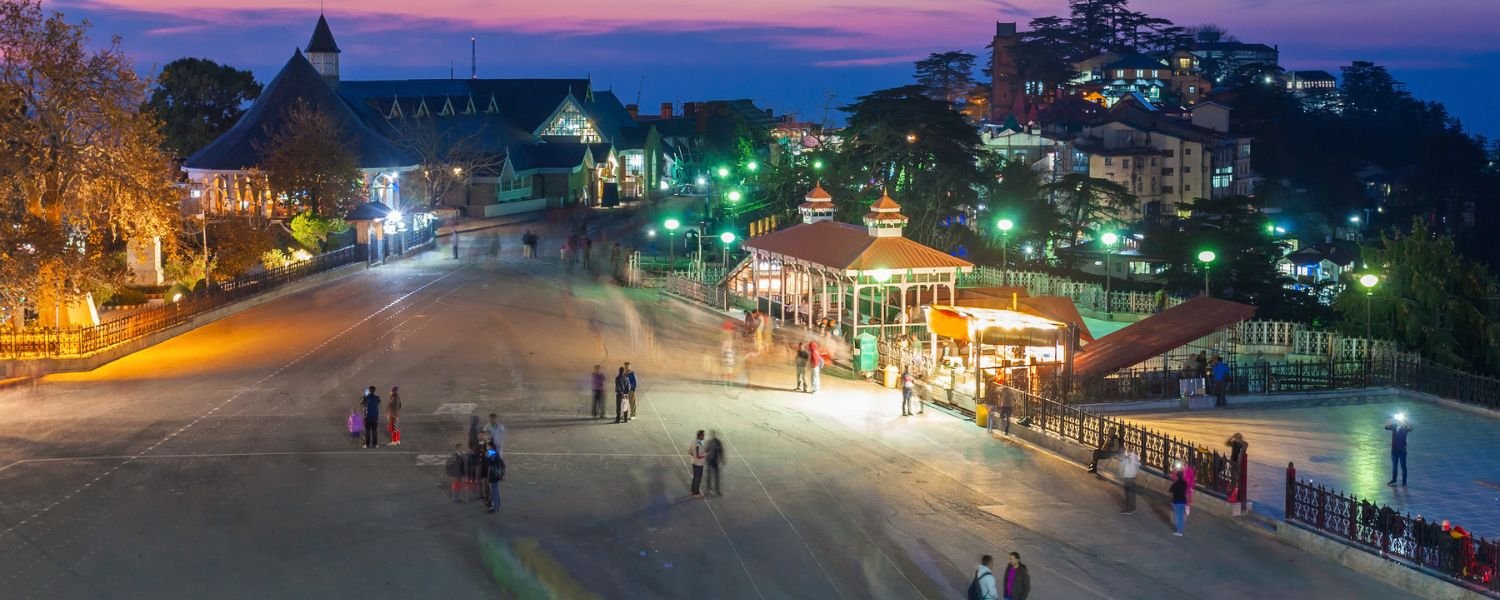
Despite being a slower and longer trip, the Shimla to Spiti route is more dependable and available all year round. If you’re travelling in the shoulder months (before the roads open from Manali) or during the winter, this road is a great option because it’s more picturesque and better maintained than the Manali route.
But even this path may encounter obstacles because of landslides, particularly following intense rains. It takes about 14 to 15 hours to travel from Shimla to Kaza.
Private Vehicles vs Public Transportation
Private vehicles are the greatest choice for people looking for a more comfortable trip. There is greater flexibility in terms of travel schedules and destination stops when a car or jeep is rented.
On the other hand, public transportation is accessible but far less common. You can travel to Kaza by HRTC bus from Manali or Shimla, but be aware that these buses are frequently packed and only run during specific seasons.
The best option for low-budget travellers is a shared jeep or tempo traveler, but be ready for lengthy and claustrophobic journeys!
Permits and Travel Preparation: What You Need to Know
Indian citizens can enter Spiti without a special permit, but foreigners must have an Inner Line Permit (ILP) in order to enter the Kinnaur region and some areas of Spiti.
The ILP is accessible online, at the entry checkpoints along the route, or from the Kaza local authorities.
Additionally, a permit is required to cross Rohtang Pass if you are coming from Manali. Visiting Rohtang Pass in Himachal Pradesh is a popular experience for travelers seeking high-altitude adventure and breathtaking views.
How and Where to Obtain Permits
You can apply online or visit the Lahaul and Spiti District’s official tourism website to get the Inner Line Permit. The Rohtang Pass Permit Portal allows applicants to submit their applications in advance for the Rohtang Pass permit.
Remember that these permits are typically needed for visitors from outside the state, so make sure you have everything organised before you set out.
High-Altitude Health Precautions
Even the lowest areas of Spiti Valley are above 4,000 meters in height, indicating the valley’s high altitude. This implies that travellers who are not acclimated may experience altitude sickness. During the first few days, it’s important to take it slowly, stay hydrated, and avoid physically demanding activities.
It’s vital to drop to a lower altitude right away and, if required, seek medical assistance if you experience symptoms like headaches, dizziness, or shortness of breath.
Before the trip, ask your doctor about altitude sickness prevention medications and bring a basic first aid kit with the necessary medications.
Things You Must Bring
It takes some preparation to pack for Spiti Valley, especially given the erratic weather and difficult environment. To ensure you’re ready for your journey, here’s a brief checklist:
Wear warm clothes because Spiti can get chilly at night, even in the summer. Keep gloves, woollen socks, thermals, and insulated jackets on hand.
Sturdy shoes: Since most of the valley is best explored on foot, comfortable trekking shoes are essential.
Waterproof clothing: When travelling between June and September, a rain jacket and sturdy pants will shield you from unforeseen weather changes.
Sun protection: Bring a wide-brimmed hat, sunglasses, and sunscreen, as the high-altitude sun can be particularly powerful.
Personal identification: Keep several copies of your identification with you (for example, your passport for foreigners, your Aadhar card or voter ID for Indians).
Essentials and toiletries: Bring hand sanitiser, toilet paper, and other personal hygiene products because some isolated villages might not have enough facilities.
The Road Trip Experience: Your Everyday Journey
Day 1: A Sturdy Start from Manali to Spiti
Manali, one of Himachal Pradesh’s most visited tourist destinations, is where the trip starts. You will then start your journey to Spiti by car. Rohtang Pass, the first significant altitude point at 3,978 meters, is reached via a rough road with many switchbacks, bumpy sections, and narrow paths.
The trip to Spiti will be relaxed, with numerous stops for rest and photography.
From the verdant valley of Manali to the dry, rocky terrain that welcomes you as you approach Rohtang, the journey’s scenery is breathtaking. As you continue toward the Spiti Valley after crossing the pass, the landscape grows increasingly rocky and vacant.
Altitude Sickness Tip: The altitude can make you feel uncomfortable as you go higher. Avoid hurrying, drink lots of water, and take frequent breaks.
It’s beneficial to descend slightly or take some time off until altitude sickness symptoms, such as headaches or dizziness, go away.
Day 2: Rohtang to Kaza: Isolated Settlements and Beautiful Scenery
Following a difficult day of travel, you will proceed in the direction of Kaza, Spiti’s main town. There are some dangerous gravel roads to drive on during this trip.
You’ll travel through charming villages like Chandertal Lake and Lossar, which are ideal places to take in the breathtaking scenery and stretch your legs.
With breathtaking views of the Spitian mountain ranges, rivers, and valleys, the drive is lengthy but worthwhile. Kaza, which is 3,800 meters above sea level, will serve as your starting point for exploring Spiti.
Suggested Stop: Stop at Chandertal Lake, a glacial lake with breathtaking views of the surrounding mountains, for a rest. It’s worth spending a night or two here if you’re on a long trip. Chandertal is also one of the most stunning among the Lakes of Himachal Pradesh, known for its crystal-clear waters and serene atmosphere.
Where to Stay in Spiti After a Day of Exploration
The base Kaza Village: Your Entry point to Spiti
Spiti’s commercial and administrative hub is Kaza. The greatest concentration of hotels, homestays, and guesthouses can be found there. Despite being the valley’s most developed area, it still has a charmingly rustic feel.
Kaza is a great starting point for your travels because it provides basic amenities like cafes, internet cafes, and small grocery stores.
Embrace Spitian Hospitality by Choosing Homestays Over Hotels
The most genuine experience can be had at one of the many homestays in Spiti. In one of the small villages surrounding Kaza, staying with a local family offers an opportunity to discover their way of life, the difficulties they encounter, and the hospitality they show guests.
Traditional Spitian cuisine will be served to you, and the warm ambience of the houses will allow you to fully experience Spiti culture.
Hotels are available, especially in Kaza, for those seeking greater convenience. These don’t have the same personal touch as a homestay, but they do have modern conveniences like hot water and heating.
Kibber, Tabo, Langza, and Hikkim are suggested villages to stay in
Kibber: An elevated community ideal for hiking and exploration. One of the world’s highest villages, it offers peaceful surroundings and breathtaking views.
Tabo: Well-known for the Tabo Monastery, sometimes called the “Ajanta of the Himalayas.” The village is one of the most serene places in Spiti and contains ancient Buddhist artefacts.
The villages of Langza and Hikkim are well-known for their fossil-rich landscapes, and Hikkim is home to the highest post office in the world. The surrounding mountains provide breathtaking views.
Must-See Locations in the Spiti Valley
Important Monastery: Spiti’s Spiritual Heart
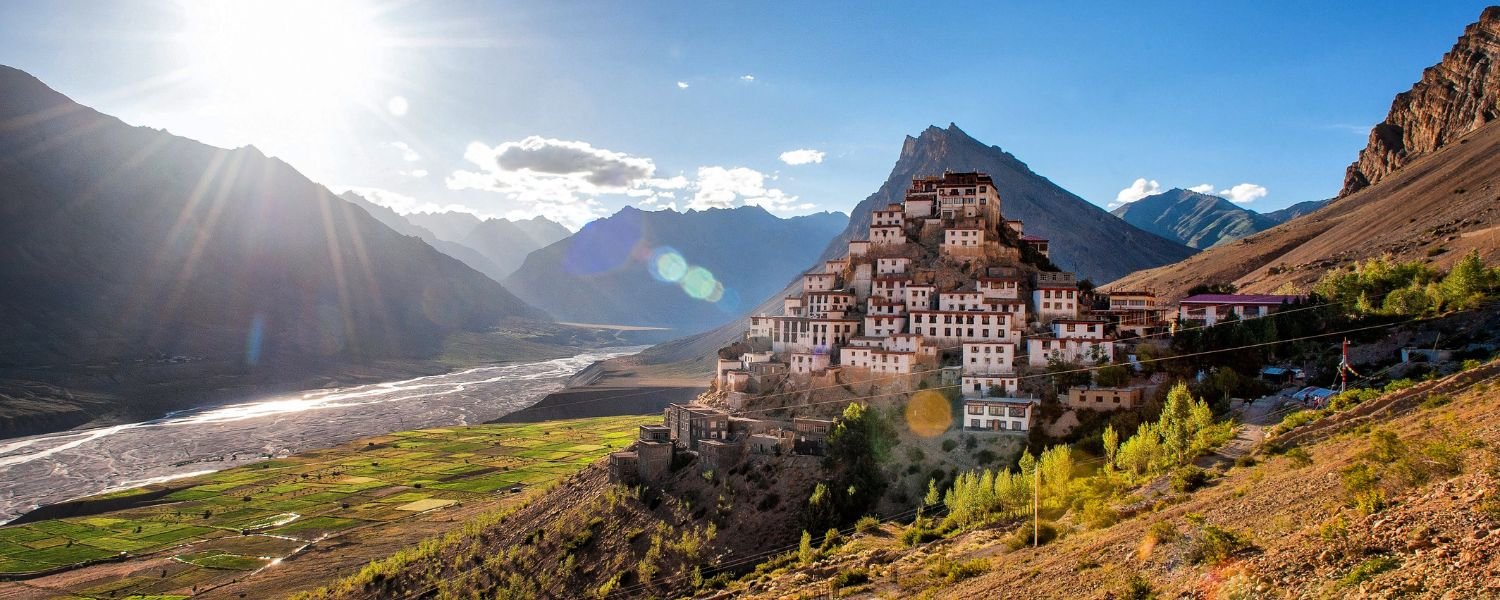
It is essential to visit Key Monastery, which is situated atop a hill. With its ancient Buddhist texts and murals, the monastery serves as a hub for spiritual education. One of India’s most famous monasteries, it provides sweeping views of the valley.
High Villages and Well-Known Bridges in Kibber and Chicham
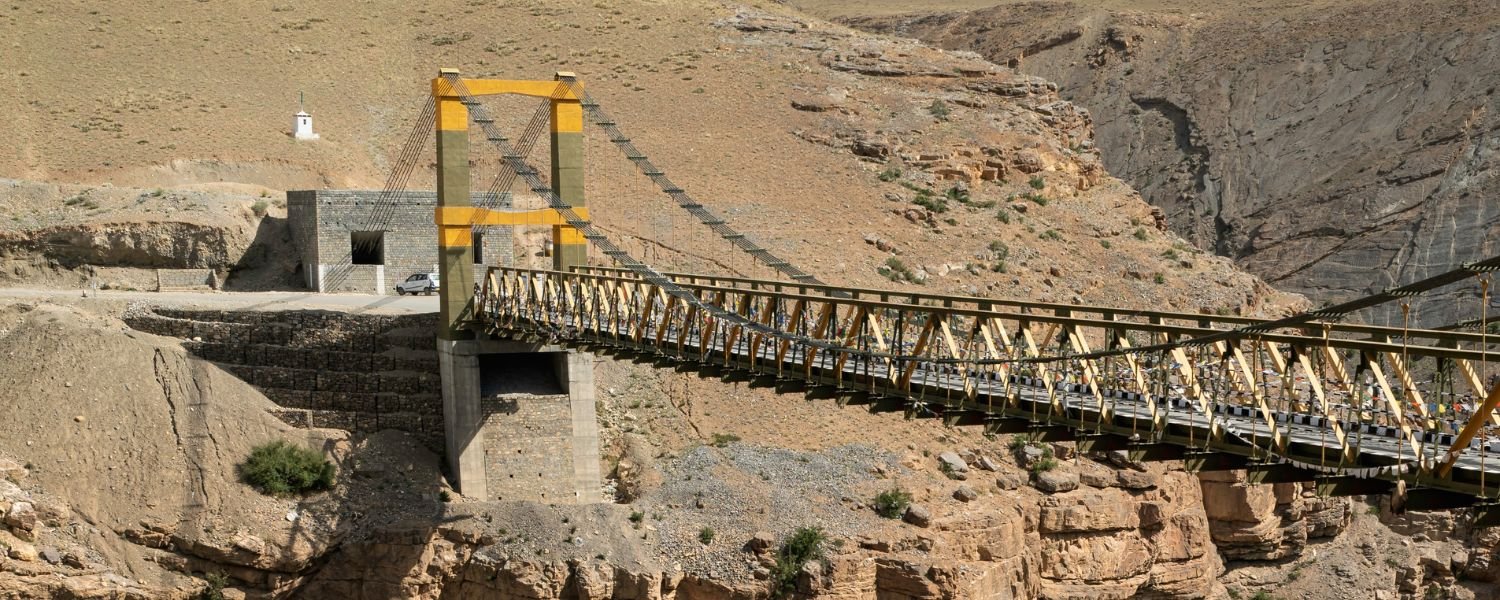
One of Spiti’s most picturesque locations is the high-altitude village of Kibber. Chicham Bridge, which is nearby, is a well-liked photo destination because it is the highest bridge in Asia. Amazing views of the surrounding mountains and valley can be seen from the village.
Komic, Hikkim, and Langza: Fossils and the Highest Post Office
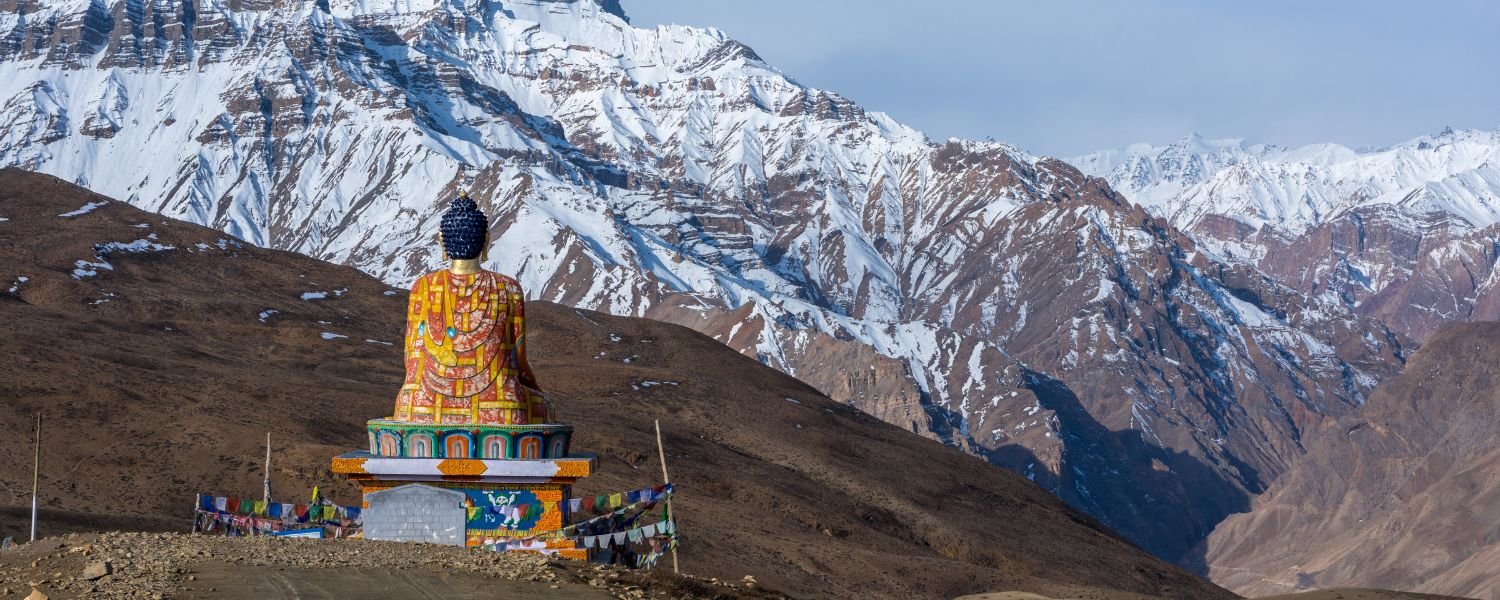
Discover the world’s highest post office and the fascinating fossils in Hikkim and Langza. Trekkers who appreciate the peaceful, isolated surroundings frequently visit these villages.
Monasteries of Tabo and Dhankar: Historic Buddhist Sites
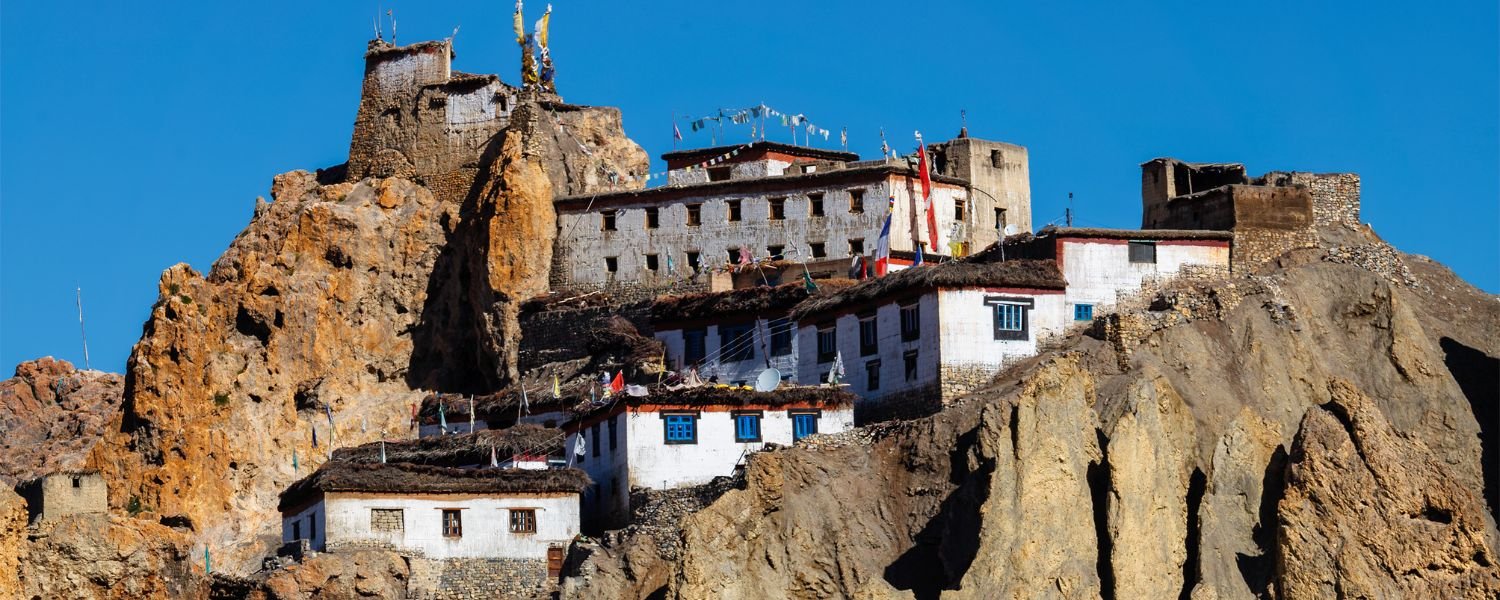
Tabo Monastery is well-known for its more than a thousand-year-old Buddhist texts and murals. Situated on a cliff, Dhankar Monastery boasts a rich history and some of Spiti’s best views.
Pin Valley: Wildlife and Greener Terrain
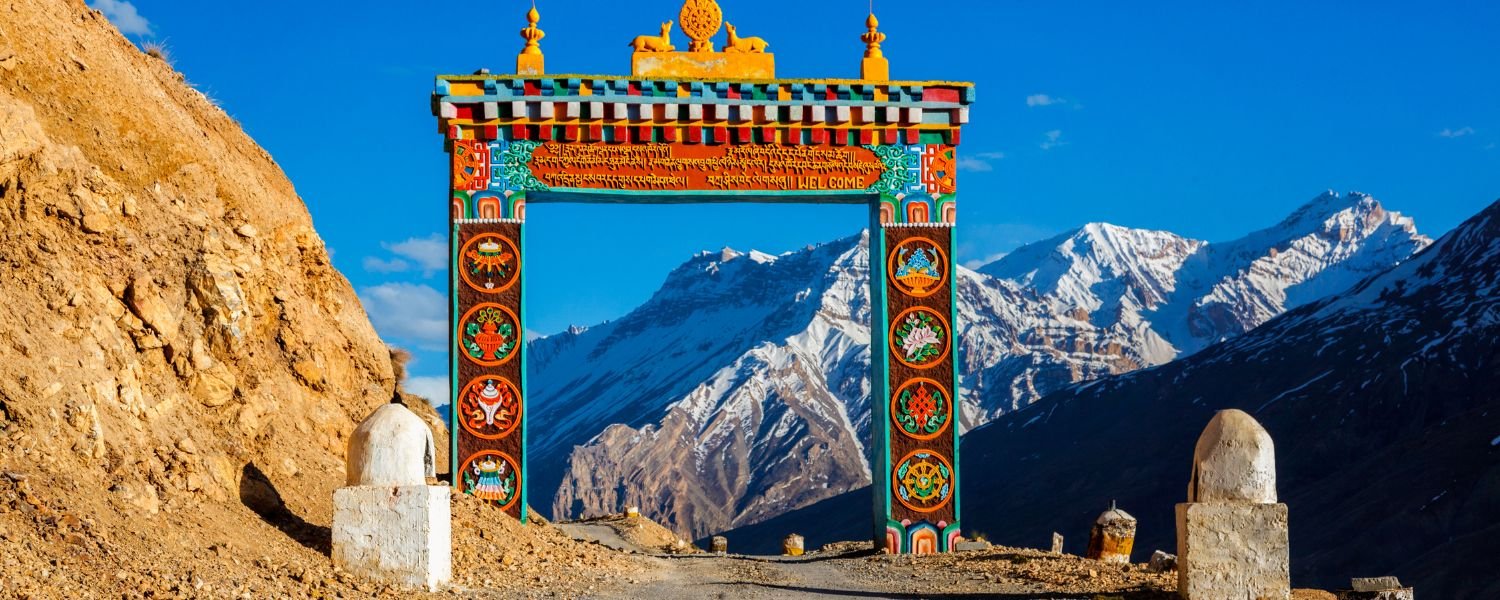
Visit Pin Valley if you want a change of pace from Spiti’s vacant surroundings. There is more vegetation and wildlife, making it greener. Here, endangered species like the snow leopard can be found.
The Moon Lake, or Chandratal Lake
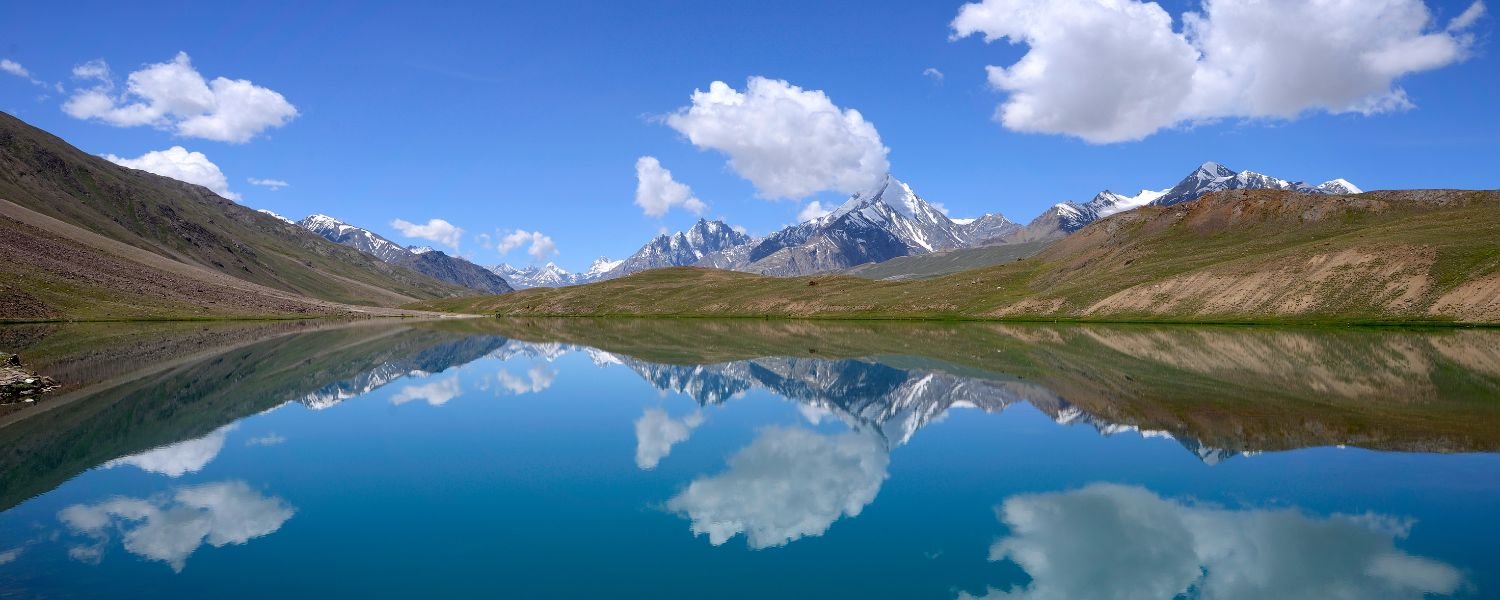
An extension of the Spiti Valley route, Chandratal Lake is a famous moon-shaped lake situated in the middle of a frigid desert. It’s the perfect location for stargazing, camping, and photography.
Regional Cuisine and Culture
Life in Spiti Villages on a Daily Basis
Herding, farming, and religious rituals are the main focuses of the Spitians’ everyday lives. Villages are frequently remote, life moves more slowly, and the severe weather dictates daily schedules. The majority of people reside in mud homes that are meant to stay warm, and there is a strong sense of community.
Tibetan and Ladakhi Influences
Spiti has a significant Tibetan cultural influence because of its closeness to Tibet, and many of its residents are Tibetan Buddhists. These customs are reflected in the monasteries, celebrations, and ceremonies.
Some of these ancient monasteries also stand as living Monuments of Himachal Pradesh Past, preserving centuries-old architecture, art, and spiritual heritage.
Popular Foods: Butter Tea, Momos, and Thukpa
The cuisine of Spiti combines Himachali, Ladakhi, and Tibetan flavours. Don’t forget to sample Butter Tea, Momos (dumplings), and Thukpa (noodle soup). The food is straightforward, filling, and ideal for the cold weather.
Respectfully Engaging with Locals
Always be courteous and considerate of local customs when engaging with them. Spend some time learning about the customs and culture of Spitians, as they tend to be reticent. Steer clear of being obtrusive and always get someone’s consent before taking their picture.
Weather and Altitude Difficulties: Be Ready
What to anticipate: Extreme weather occurs in Spiti seasonally. Although summer (June to August) brings warmer temperatures, it can still be quite cold, particularly at night.
The harsh winter months of November through February bring below-freezing temperatures and a lot of snow, which can clog roads.
Temperature Differences by Day and Night
Summertime temperatures are generally mild, with daytime highs of 15 to 20°C, but nighttime lows of 0°C or lower are possible. Temperatures can drop to -20°C or lower during the winter.
Oxygen Levels and Management Strategies
Oxygen levels may be low because of the high altitude (4,000 meters and above). If you feel lightheaded or out of breath, take it easy, stay hydrated, and stay away from physically demanding activities. Avoid rushing your itinerary, and always bring altitude sickness medication.
Packing Advice for Severe Weather Conditions
Bring sturdy shoes, waterproof gear, and warm clothes. Additionally necessary are a first-aid kit, sun protection, and a high-quality sleeping bag. Additionally, since water quality can occasionally be suspect, bring a Lifestraw water bottle for filtration.
A Beautiful Journey with Nature, Photography, and Solitude
The Spiti Valley is a place of untamed beauty, classic scenery, and deep peace. Often called a photographer’s paradise, it appeals to both adventurers and lone travellers.
Spiti offers a once-in-a-lifetime experience, regardless of your interests—photography, wildlife observation, stargazing, or just finding inner peace amid the untamed mountains.
A Photographer’s Dream: Nature, Photography, and Stargazing
For photographers, Spiti Valley is a gold mine. There are countless opportunities for breathtaking photographs in the vast, desolate landscapes, charming villages, and historic monasteries perched on cliff faces.
The dramatic light, surreal views, and unspoiled surroundings will inspire you as a photographer, regardless of your level of experience.
When to Take Golden-Hour Shots
The golden hours, which are immediately after sunrise and just before sunset, are the ideal times to photograph Spiti’s breathtaking scenery. While the evening sun bathes the valley in shades of orange, pink, and purple, the early morning light gives the tall mountains a gentle, warm glow.
The enchanting atmosphere created by these moments is ideal for preserving the valley’s untamed splendour and historic culture. The golden hour will improve every photograph, whether it features the deep valleys, the tranquil scenery, or the monasteries of Spiti.
Possibilities for Stargazing
Spiti’s clean, pollution-free skies are among its most striking attributes. Spiti is one of the greatest locations in India for stargazing because of the low levels of light pollution. The Milky Way, constellations, and shooting stars make the sky come to life at night.
Capturing the night sky over Spiti’s desolate landscapes is an amazing challenge and reward for photography enthusiasts. With its wide-ranging views of the night sky, Chandratal Lake is an especially beautiful location for stargazing.
Seeing Wildlife: A Photographer’s Dream
For photographers, Spiti’s wildlife provides yet another exceptional experience. The snow leopard, Himalayan fox, ibex, and musk deer are among the many elusive animal species that call the valley home.
Although it takes time and a little bit of luck to spot these animals, those who do get a glimpse can record unadulterated moments of nature in its most pristine state.
Because of its remote location, Spiti is a haven for wildlife enthusiasts and the ideal place to see rare species in the wild.
Solo Travel & Personal Reflections: A path to self-discovery
Solo travel through Spiti Valley is a journey into the heart and mind that goes beyond adventure. Spiti proved to be a friendly and secure place for a woman travelling alone.
Deep emotional development and introspection were made possible by the combination of the feeling of isolation and the friendliness of the locals.
Peace, Difficulties, and Emotional Development
Travelling alone can be both empowering and difficult. Spiti highlights both the harshness and the beauty of life with its chilly desert setting.
An atmosphere of profound reflection is created by the valley’s quiet, the simplicity of village life, and the existence of historic spiritual sites.
Every day presented difficulties, such as physical exhaustion, loneliness, or altitude sickness, but it also included peaceful moments where I came to value my alone time and the peaceful cadence of life.
Spiti provides a calm, safe environment for lone travellers to develop emotionally. You won’t ever feel alone because of how welcoming and helpful the locals are. You will simultaneously find time for introspection, meditation, and a new outlook on life.
Motivation for Self-Sufficiency Travellers
Whether you’re travelling alone or with a small group, Spiti is perfect for independent travellers. The journey is immensely rewarding, despite the difficult roads.
I felt empowered and liberated as a female traveller travelling alone. You will become completely engrossed in the people, the culture, and the scenery.
Solo travel in Spiti challenges you to push yourself and take on obstacles. It changes your perspective on the world and what it means to be independent.
How Spiti reshapes Perspective
The harsh yet stunning scenery of Spiti has the power to change your viewpoint. Time seems to slow down there, and you start to notice the little things.
You can re-establish a connection with the natural world, your thoughts, and the cycle of life in this area. Spiti urges you to embrace the simplicity of the here and now and to look beyond materialistic goals.
Essential Tips for Planning Your Spiti Valley Trip
May through October is the ideal time to visit.
May through October are the best months to visit Spiti because of the nice weather and open roads. The valley’s temperatures are at their warmest during this time of year, with daytime highs of 15 to 20°C and cool nights.
The valley gets very cold during the winter months of November through February, and there is a lot of snowfall that blocks many roads, making travel challenging.
Estimate of the Budget
A trip to Spiti is a rewarding and reasonably priced adventure. This is an approximate spending plan for a seven-day trip:
Transportation: ₹15,000–₹20,000 (shared jeep or private vehicle)
Lodging: ₹500 to ₹1,500 per night (guesthouse or homestay)
Daily food costs: ₹300 to ₹500
Permits: ₹300 to ₹500 (for Rohtang Pass or foreigners)
Depending on your preferences and travel style, a seven-day trip to Spiti could cost anywhere from ₹20,000 to ₹30,000.
ATMs, electricity, and mobile networks
There isn’t much mobile network coverage in Spiti; BSNL and Airtel provide sporadic connectivity in Kaza and the surrounding areas.
Only in Kaza are there ATMs, and while electricity is available in isolated villages, it is frequently erratic. Keep extra power banks for your gadgets and be ready for sporadic power outages.
Tips for Sustainability and Safety
Travellers can feel safe in Spiti, but it’s crucial to show consideration for the environment and local culture. Here are some pointers:
Before taking pictures of locals or their homes, always get their permission.
Don’t litter and abide by the Leave No Trace philosophy.
Observe local traditions and customs, particularly in villages and monasteries.
Because waste disposal is an issue in remote areas, bring your waste with you.
FAQs
1. Is it safe to travel alone on Spiti?
Yes, women and other lone travellers can travel safely on Spiti. Although it’s important to exercise caution when travelling through remote areas, the locals are friendly and the area is serene.
2. How many days is enough?
The best time to see Spiti’s main attractions is during a 7-day trip. Increase your stay to 10 days if you want to trek extensively or visit more isolated villages.
3. Is it possible to travel to Spiti during the winter?
Yes, but because of the bitter cold, a lot of snow, and closed roads, winter travel is difficult. Winter travel should only be considered by the most courageous adventurers equipped with the appropriate equipment.
4. Is it better to go to Spiti via Shimla or Manali?
Although both routes are picturesque, the Shimla route is open all year round and has better road conditions, while the Manali route is shorter and more straightforward. The season and your personal preferences will determine this.
Conclusion: Spiti’s Enchanting Charm
Spiti Valley is an experience that will last a lifetime, not just a place to visit. With its rocky roads, high-altitude villages, historic monasteries, and breathtaking scenery, Spiti presents a singular chance for adventure and self-discovery.
The journey is unforgettable due to the valley’s unspoiled beauty and spiritual significance.Spend some time getting to know Spiti’s serene atmosphere, ageless culture, and hospitable populace. Let Spiti change your outlook on life, travel with an open mind, and explore sensibly.
